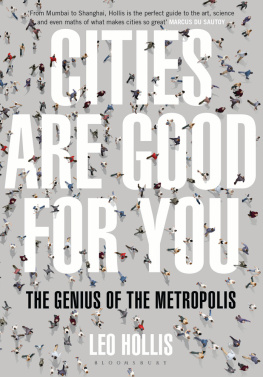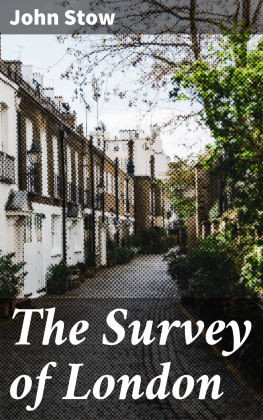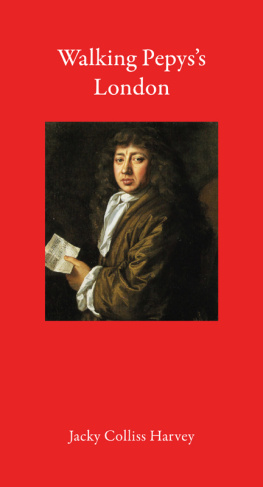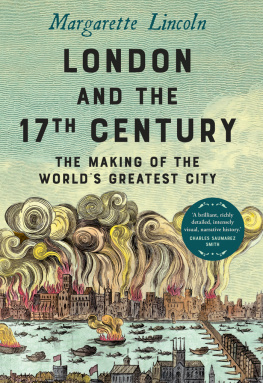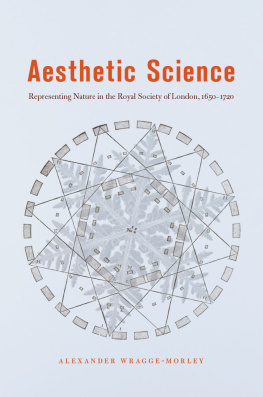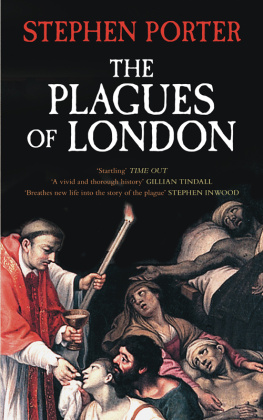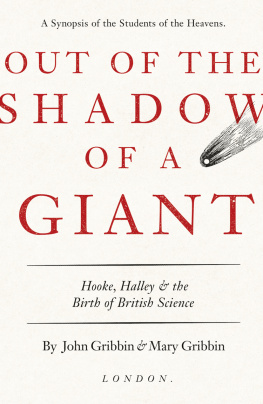LONDON RISING
The Men Who Made Modern London
Leo Hollis

CONTENTS
PART ONE
Children of the Civil War
PART TWO
The Rise and Fall of
Restoration London
PART THREE
Resurgam
PART FOUR
The Making of Modern London
PART FIVE
London Reborn
To Nigel and Michael
Let us now praise famous Men, and our fathers that begat us; who were honoured in their generations, and were the glory of their Times. Of these let his Memorial be blessed, who builded the House and set up a holy Temple to the Lord: who raisd up our ruins again.
THE BOOK OF ECCLESIASTICUS
A walk through London, its many streets and neighbourhoods, reveals an image of modernity and speed, of shining surfaces and traffic the city presents itself as a vision of the future. London has many layers, however, and behind the steel and glass the past remains. In Leadenhall Market there is a barbers shop where, in the basement, the excavated stones of a first-century Roman forum are preserved. Beneath the courtyard in front of the Guildhall stand the remains of an amphitheatre which, once the Romans had left in the fifth century, became the location for the local council meeting place, the folksmoot of the Anglo-Saxon tribes. The Guildhall that reigns above the surface has been the powerhouse of the City since the twelfth century. The history of the city is also preserved in its street names: medieval Cheapside, the central market within the city walls, is still fed today by Bread Street and Milk Street, and leads to Poultry, where chicken farmers and greengrocers sold their wares.
As the layers of the past are peeled away one by one, the city becomes plural. London is a city that has reinvented itself upon the remains of the past. In no time was this more spectacularly true than in the seventeenth century after the Great Fire of 1666, and nowhere was it more resplendent and emblematic than in the resurrection of St Pauls Cathedral. This extraordinary physical rebuilding of London went far beyond the stones of the city but encompassed its organisation and the layout of the streets, the bustle of the markets and the energy of the offices that still dominate in the financial centre of the Square Mile.
The seventeenth century marked not only the rebirth of London but also heralded the formation of the modern city, which has been replicated or translated in cities throughout the world. The questions that were first asked in this period are the problems we still deliberate today. What is government? How do we know whether something is true? Are there fundamental laws to the universe? How does one judge the morality of profit or the existence of God? London Rising is the story of how the seeds of this modern metropolis were first sown.
London in the middle of the seventeenth century was a paranoid city, gripped by anxiety and holy prediction. Visitors descending from a coach at one of the many inns that dotted the outskirts were thrust into the heart of the throng with their first step; arriving on the murky tidal waters of the Thames by boat, they would have passed the north bank, a huddle of medieval roofs and Gothic spires that rose up into the fog-filled air. On the waterfront, wooden houses clung to the riverbank, where sailors and merchants busied themselves among the wharfs and warehouses that stored the goods of the world. Disembarking before the elegant London Bridge, the travellers would have been be forced to jostle past the crowds waiting for passage, and found themselves assaulted by the maelstrom of city life.
Away from the riverbank and into the heart of the City, the streets were filled with carts and bodies; everything was in motion. The sky would have been almost masked by the eaves of the houses that bent over the street like praying monks. Smoke filled the air so that her inhabitants breathe nothing but an impure and thick mist, accompanied with a fuliginous and filthy vapour, which renders them obnoxious to a thousand inconveniences. Progress on foot was slow and precarious; some of the main streets had been paved but most were packed with sharp Kentish cobbles, the smaller routes lined with compact earth so that rain turned the road to a quagmire of greyish mud. The way was littered with refuse. During a rainless summer when the water had not rushed the waste down to the Thames the city stench was pervasive.
For the last half-century, London had been on the verge of collapse. The City had become so large that it could no longer be controlled by the medieval institutions of guilds, aldermen and the annually elected Lord Mayor. New neighbourhoods had sprung up outside the walls that circled the Square Mile, which had stood as both the defence and limits of the ancient city. By the 1640s over two-thirds of the population were outside in the burgeoning suburbs. The rise of the masterless men merchants who settled in the suburbs, and who did not wish to receive the privileges and obligations of the freedom of the City was a hazard to the political economy of the capital.
Between 1642 and 1648, London became the focus of a civil war that tore the kingdoms of England, Ireland and Scotland apart. The capital had been the nursery of the present rebellion, yet within a few years the city became the victim of its own creation: when the Crown was replaced by an uneasy republic, London lived in fear and trepidation. The revival of order, the Restoration, delivered a hope of return to the status quo ante, but such dreams were a chimera.
In 1665, five years after the Restoration, which had been welcomed with joy and hope, the capital was struck down by a plague that claimed nearly a hundred thousand lives. The following summer, England was hit by such a debilitating drought that the Oxford rivers ran dry. Apart from one freak hailstorm in July, there was no rain. By midsummer, Londons wooden buildings were so dry that they were all but kindling. It would take only a spark to turn the city into a conflagration.
On the evening of Sunday, 2 September 1666, a fire had started in a bakers shop in Pudding Lane on the north side of the river, yet fires were an inevitable hazard in Londons huddled streets. This time, however, something must have gone terribly wrong for on the following afternoon, as the diarist John Evelyn was leaving his home at Sayes Court in Deptford, the sailors in the Kings Depot just across his garden wall were being mustered to fight the flames. Later that day, Evelyn travelled to the south shore of the Thames at Bankside and could not believe the scene in front of him. It was as if he was watching a terrible masque of destruction, and he searched for a way to explain what he had seen: The noise and cracking and thunder of the impetuous flames, the shrieking of women and children, the hurry of people, the fall of towers, houses, and churches, was like a hideous storm the ruins resembling the picture of Troy.
Earlier that day the smoke obscured the sun, making night of day, yet as dusk fell Evelyn recorded flames so high that night had been banished and the dusk turned light as day for ten miles round about, after a dreadful manner. The sky was crimson, as if the air itself were alight, like the top of a burning oven. But Evelyn could do nothing but mourn for his city: oh the miserable and calamitous spectacle, such as haply the world had not seen since the foundation of it, nor can be outdone till the universal conflagration thereof. Before him the whole of London was ablaze, the flames leapt from street to street and house to house. The firestorm was indiscriminate, consuming everything in its path. As he looked helplessly on, he sighed, London was, but is no more.



